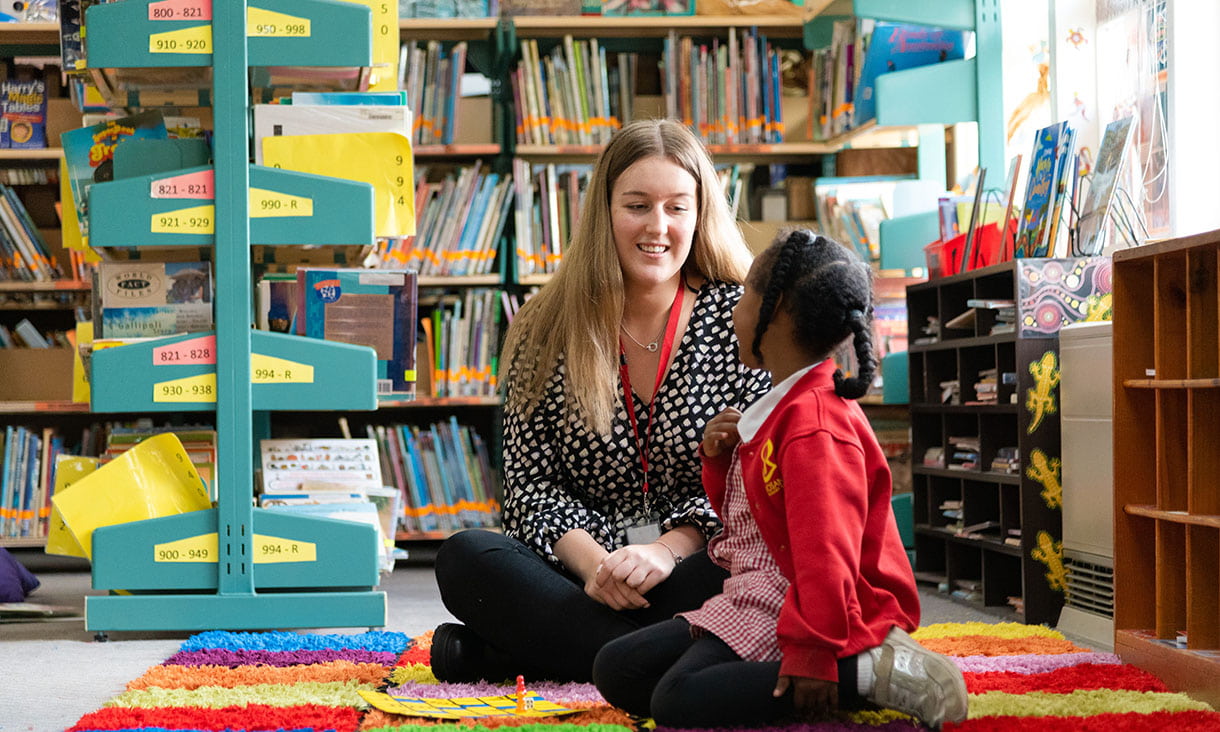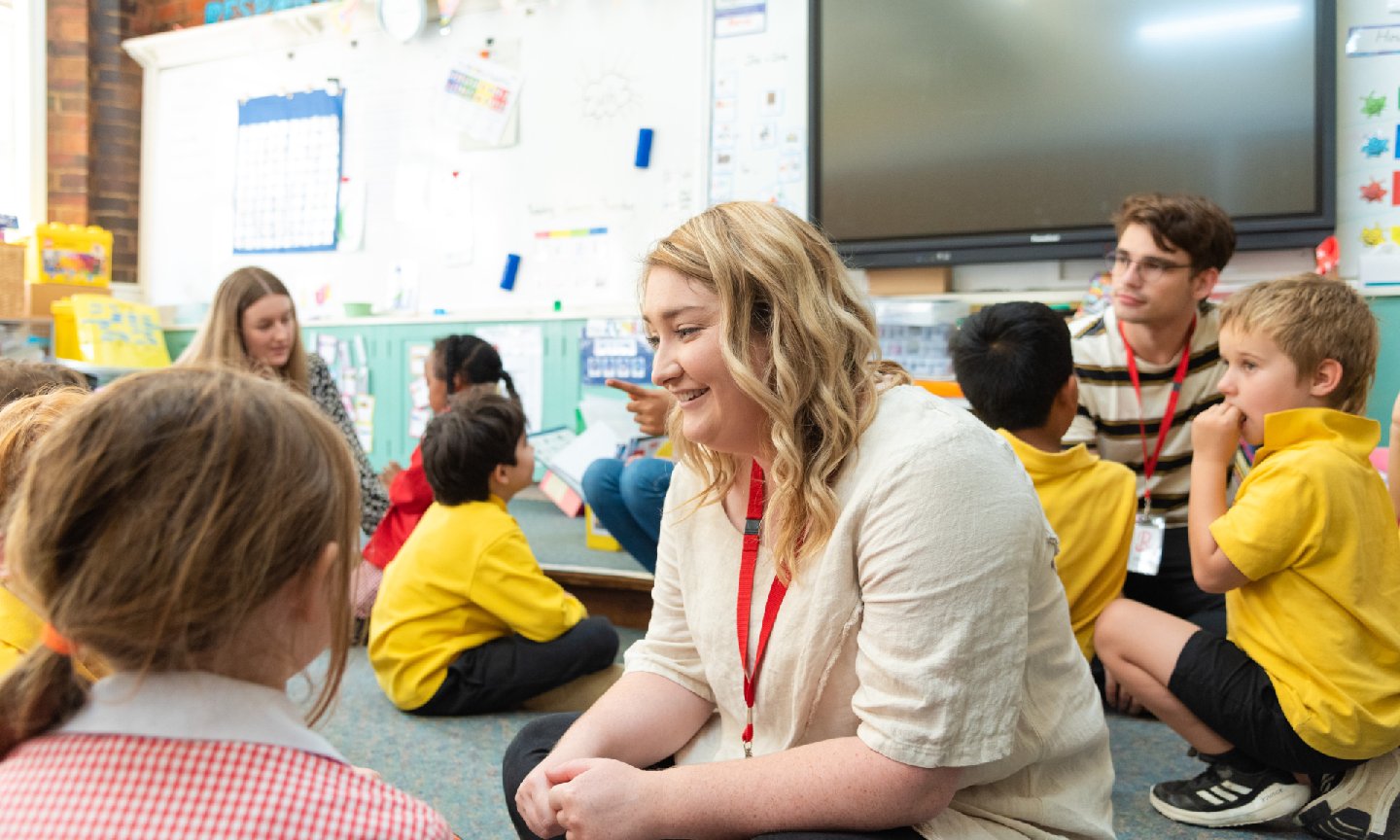Early childhood educators play an important role in promoting children’s development from infancy to the earliest stages of schooling. So what are the key skills these teachers need to be successful in their careers?
Early childhood educators and teachers play an essential role in promoting children’s social, emotional and intellectual development.
Working with children in their formative years (from age 0 to 5), early childhood teachers help kids develop skills that provide the foundation for all their future learning. And as our population continues to grow, so too does the demand for capable teachers. According to the National Skills Commission, in the five years to 2026, the number of early childhood educators in Australia is expected to increase by 21.6%.1
We spoke with two students of RMIT’s accredited Graduate Diploma in Early Childhood Education to find out what qualities every early childhood teacher should possess for a rewarding and future-focused career.

#1: Curiosity
After a major life change, Rini Roy gained her Graduate Diploma in Early Childhood Education at the end of 2021.
“I migrated to Australia in 2014. I have a master's degree in biotechnology and used to work in microbiology labs, so when we migrated, I was initially looking for jobs in that field, but I had an eight-month-old at the time, and being a young mother, my priorities just shifted.”
Roy became fascinated with the teaching profession when she began taking her daughter to childcare and decided to pursue it as a career. She believes children have a natural curiosity to figure out how the world works, and early childhood educators nurture and develop this curiosity, while keeping an open mind themselves.
“A few weeks back a child discovered an insect at our centre — a cricket. After that we started making videos of crickets and they started asking, ‘Could it fly?’ and ‘How far could it fly?’, which led to a whole research project, and now — three weeks later — we’re still learning about it!
“Every day we do STEAM (science, technology, engineering, art and maths) with the kids, but this doesn’t have to be something like a science experiment. Right now, we're learning about Aboriginal culture and history. We started by looking at the map of Australia, pointing out where we live and who it belongs to. We learn about the culture and how they would take care of the land.
“From there we went on to read Tiddalik the frog, an Indigenous Dreamtime story, which is about a frog that was greedy and drank all the water in the creeks, lakes and rivers. That led us to looking at water conservation and why we need to take care of natural resources.”
#2: Empathy
Serena Langenbacher has practised as a child psychologist for most of her career, but recently decided to pursue her long-held ambition to become a kindergarten teacher. Now finishing her final placement in the Graduate Diploma in Early Childhood Education, she says RMIT’s block model of learning meant she could complete the qualification while working full-time.
“You only do one subject at a time for about four to five weeks and then you do another subject. You don't take on three or four subjects at once, like most traditional courses. It’s been fantastic for me.”
She’s found that acknowledging the unique strengths, backgrounds and challenges of every child is important in her role.
"As an early childhood educator, I think you need a lot of empathy for both children and families. You need to be able to think about what it must be like to walk in their shoes, because every child and every family has their own story.”
This need for empathy is now considered fundamental to the teaching profession. It’s also deeply embedded in RMIT’s Graduate Diploma in Early Childhood Education, where students explore and adopt inclusive learning and teaching practices concerning age, gender, ethnicity and ability.
#3: Flexibility
Roy says it’s important to organise your day as an early childhood teacher, but it rarely goes according to plan.
“We have what we call ‘rituals’, which are different from a routine in that you have to be flexible. You may have a set lunchtime, but a child may not be hungry and you have to be okay with that.
“I like my day to be planned from what the children want to learn. It’s unpredictable, but because they are the centre of what we do, I let them take the lead. We should be a co-player rather than leading the play.”
Langenbacher agrees that flexibility is a necessity, and says the 60 days of placements she’s undertaken as part of her RMIT studies have helped her to become a more adaptable and responsive educator.
"There is a routine, but it's play-based. There are still things that [the kids] do every day and that includes activities like creative art, reading time, resting time, meditation, physical movement.
“Playing games inside and out, learning how to take part in a group activity, learning how to do an activity quietly by yourself, learning how to pack things up... these [activities] help them learn all those unspoken social rules as well.”
#4: Communication
Roy believes early childhood educators need to be just as skilled at communicating with parents as they do with children.
“Where I work now, every educator has a set of focused children and I'm responsible for documenting and working towards their goals. We work with their family to understand what they want to achieve, then regularly show what we've been doing to progress towards what we discussed, and then I structure the program accordingly.”
She says witnessing how much her students grow and learn is a very special experience.
“When I have a child start at the centre in January, by the time it's June, the progress that you see just blows you away. How each child learns and what they take away from it can be so different, but they’re all making progress. They've learned something new, in their own way, and it’s amazing to witness. It’s the best part of the job.”
Story: Sophie MacGillivray
1Australian Government, National Skills Commission Labour Market Insights. “Early Childhood (Pre-primary School) Teachers”, https://labourmarketinsights.gov.au/occupation-profile/early-childhood-pre-primary-school-teachers?occupationCode=2411




